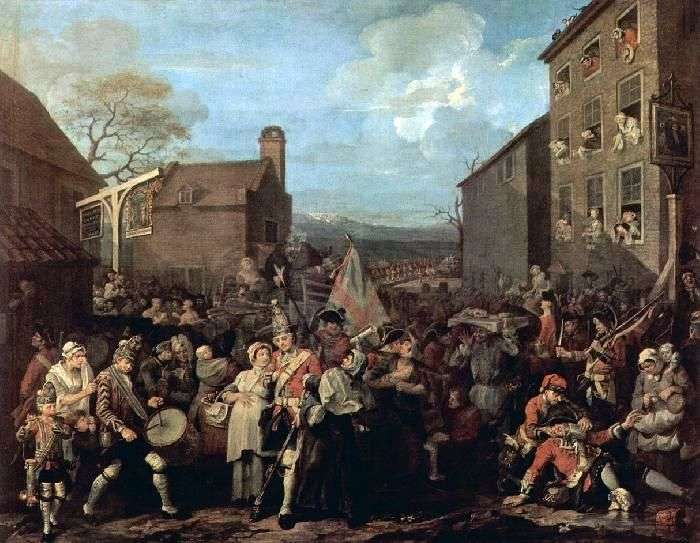
Here Hogarth addresses the events of recent history. In 1745, the Jacobite supporters – the Catholic party, who wished to restore the rule of the Stuart dynasty – began an armed invasion of Scotland. The Jacobites won a number of victories, after which their advance was suspended. However, by this time, anxious moods had swept the entire south of England, so troops from Europe were urgently deployed here.
One of the units was sent to Finchley to cover the approaches to London. As always, Hogarth’s painting contains several semantic layers. In 1749, the events described by the artist were still fresh in the memory of his contemporaries, and the Parliament only discussed the “Rebellion Act”, which was to determine the fate of the captured Jacobites. This act required and the strengthening of military discipline, so that the picture of Hogarth was relevant. In his usual manner, the artist parodies famous stories about the parting of soldiers with their beloved before leaving for war, including Jean Antoine Watteau’s works known to everyone.
 Trekking à Finchley – William Hogarth
Trekking à Finchley – William Hogarth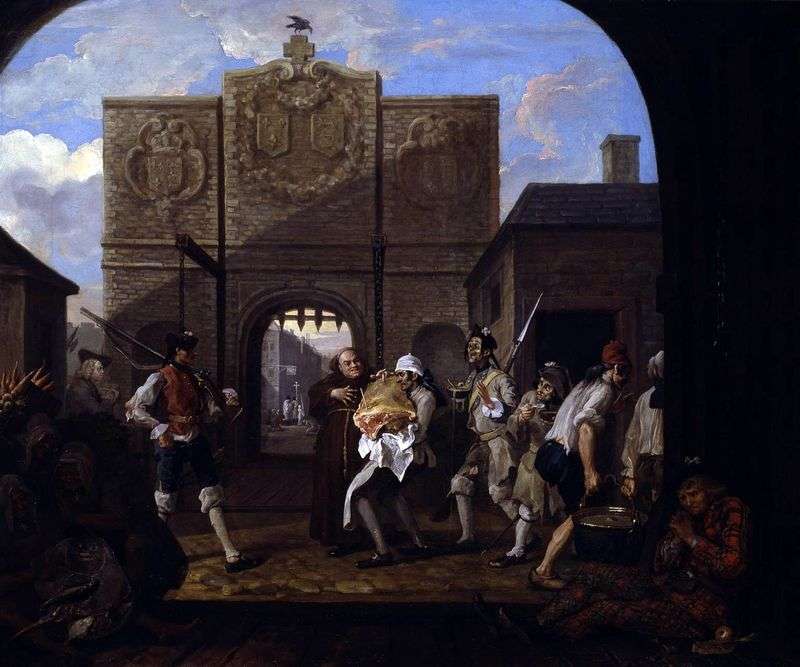 Gates of Calais, or O, roast beef of old England by William Hogarth
Gates of Calais, or O, roast beef of old England by William Hogarth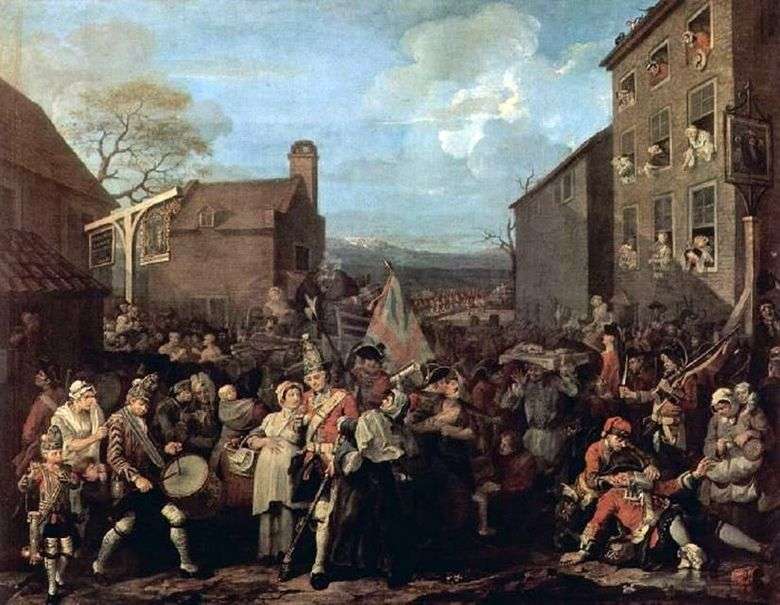 Finchley Trekking – William Hogarth
Finchley Trekking – William Hogarth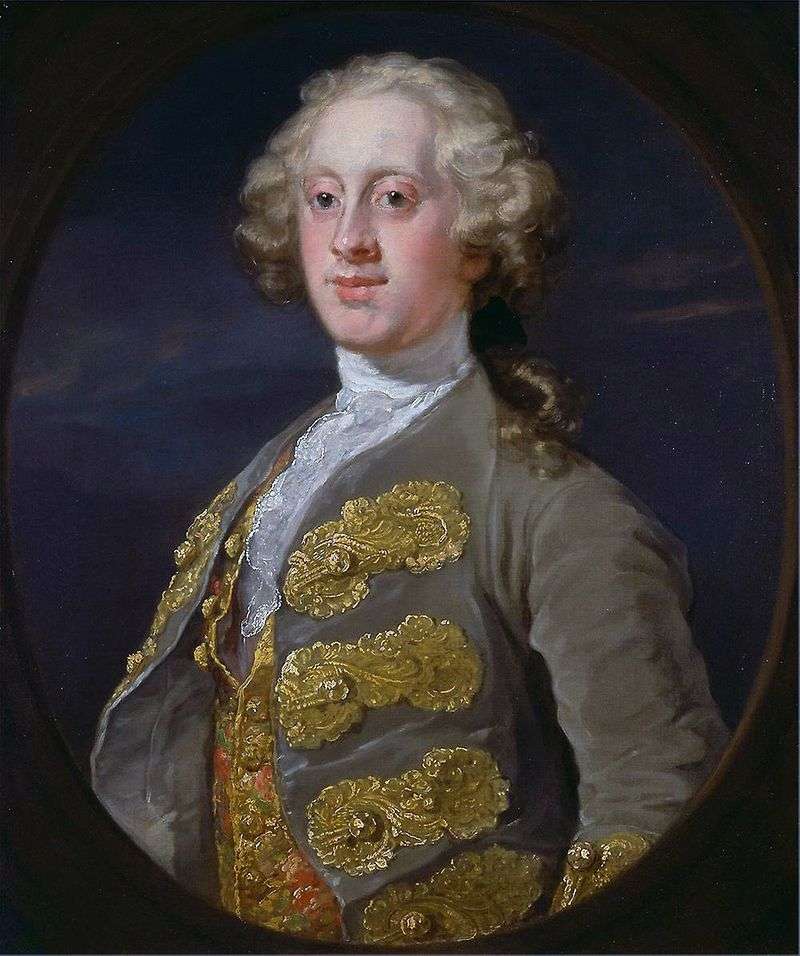 Portrait of William Cavendish, Marquise of Hartington by William Hogarth
Portrait of William Cavendish, Marquise of Hartington by William Hogarth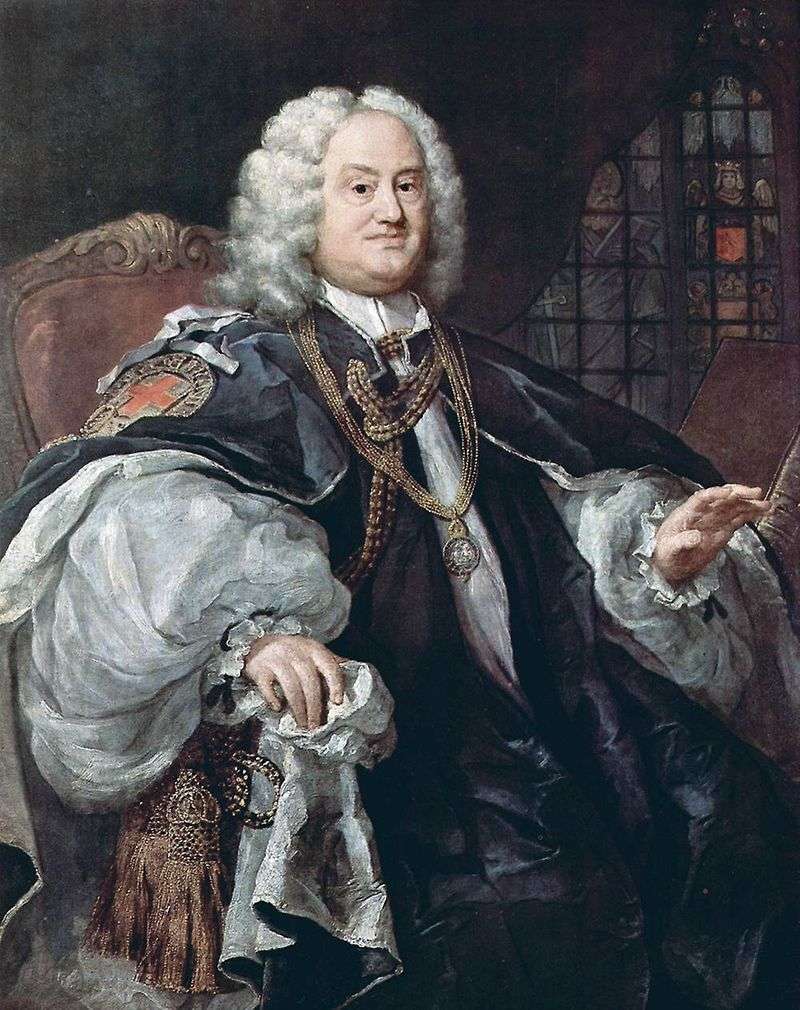 Portrait of Bishop Howley by William Hogarth
Portrait of Bishop Howley by William Hogarth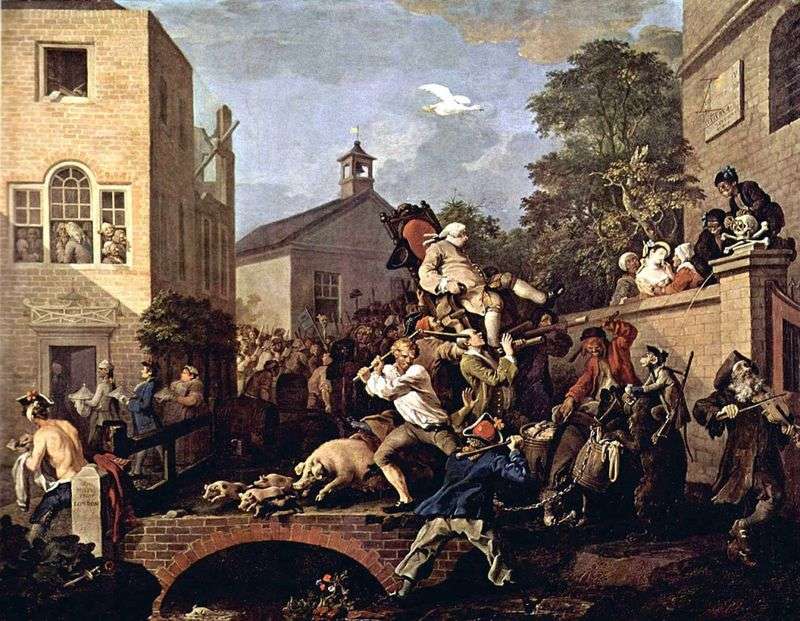 Triumphant procession by William Hogarth
Triumphant procession by William Hogarth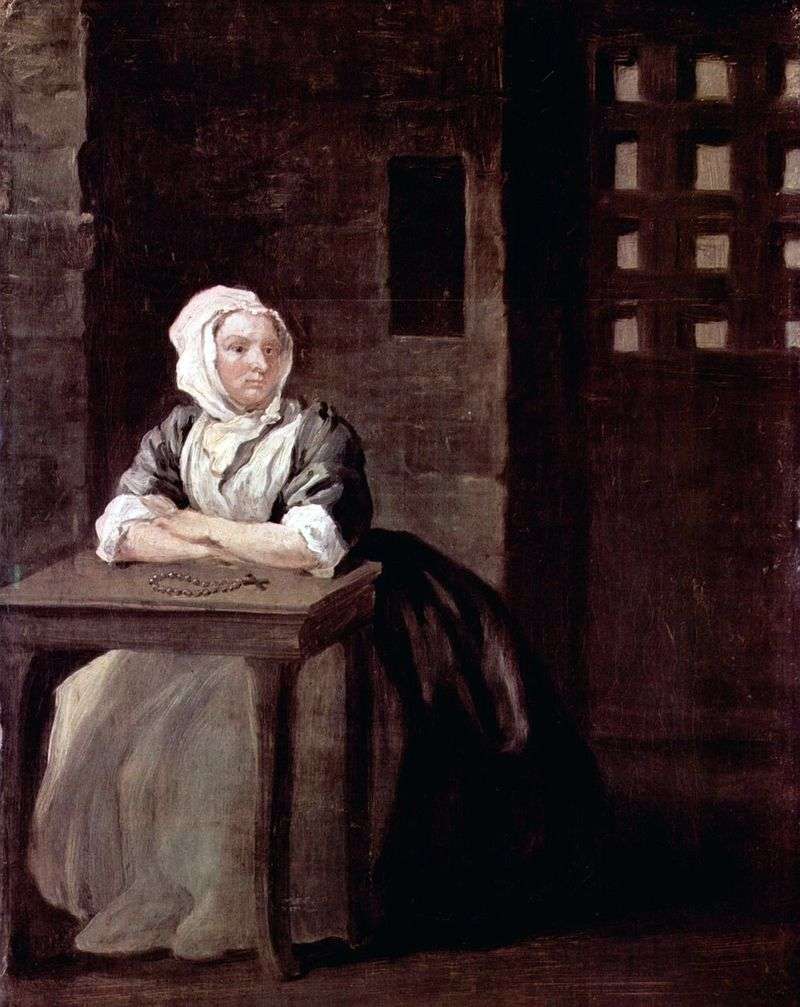 Sarah Malcolm by William Hogarth
Sarah Malcolm by William Hogarth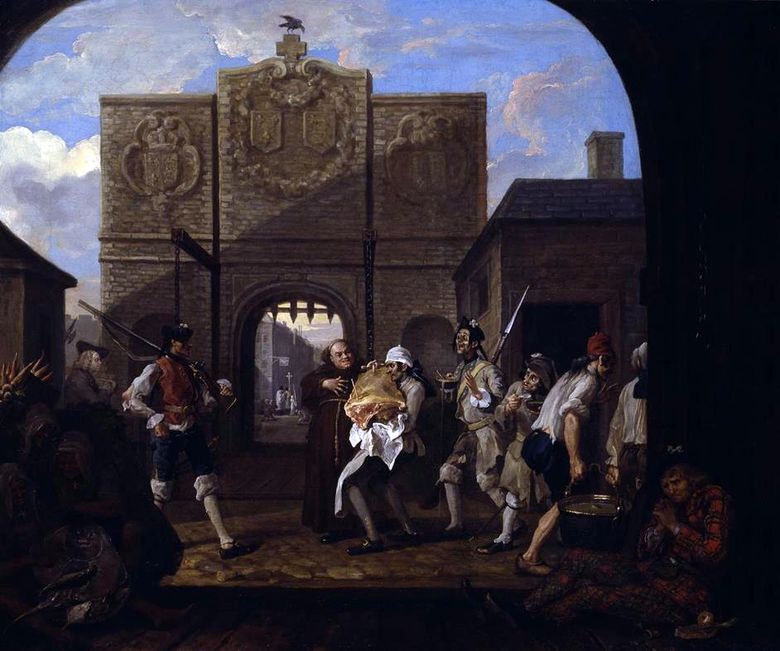 Porte de Calais, ou O, rosbif de la vieille Angleterre – William Hogarth
Porte de Calais, ou O, rosbif de la vieille Angleterre – William Hogarth